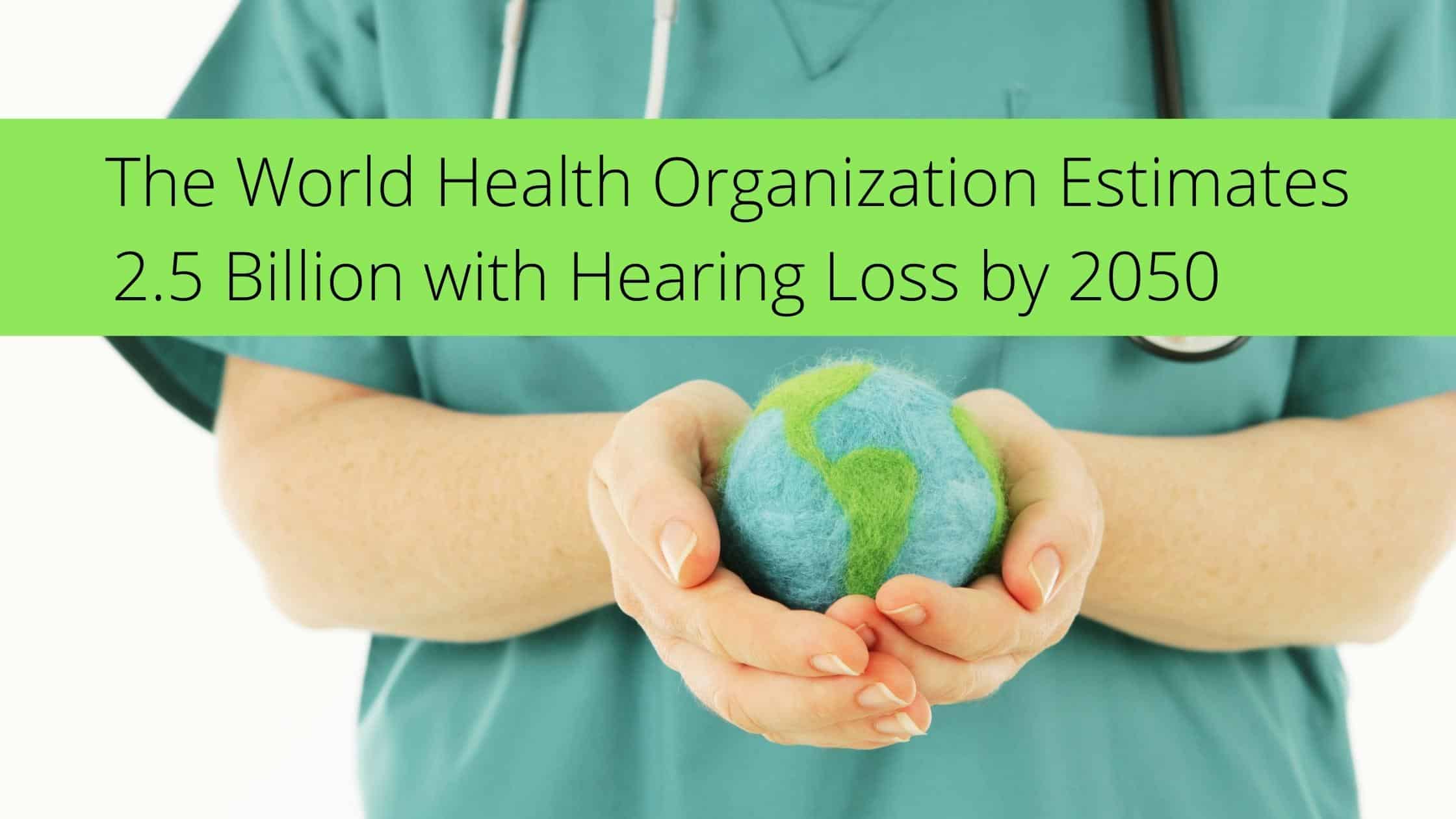
There are currently an estimated 1.5 billion people living with hearing loss globally. Nearly 50 million people are in the United States. In a report launched in March 2021, the World Health Organization (WHO) warns that these statistics are projected to grow rapidly, exponentially increasing the number of people with hearing loss. WHO estimates that by 2050, 2.5 billion people worldwide will be living with some degree of hearing loss. This is a 50% increase in less than thirty years! WHO’s World Report emphasizes the importance of investing in and expanding access to hearing healthcare services globally.
Increased Prevalence of Hearing Loss
2.5 billion people with hearing loss globally would mean 1 in 4 people living with the condition. WHO suggests a few factors for this staggering increase:
- Common misconceptions: there are numerous misconceptions and general lack of knowledge about hearing loss that contributes to a delay in treatment. Though hearing loss is a common condition, it is widely undertreated. People often assume that it is not a serious condition that needs immediate medical attention. Another common misconception is that it only impacts older adults. These misconceptions contribute to stigmatizing attitudes that lead to inaction.
- Lack of access to services: hearing healthcare is not usually integrated into national health systems. Additionally, WHO’s report outlines that in developing countries:
-
- nearly 78% have less than one ENT specialist per million population
- 93% have less than one audiologist per million population
This highlights a significant lack of resources and access to hearing healthcare services.
- Increased exposure to loud noise: WHO estimates that 1.1 children and young adults (ages 12-35) are specifically at risk of developing hearing loss due to exposure to loud noise through audio devices and/or loud venues.
WHO recommends investing in comprehensive education around hearing loss: prevention, early diagnosis, and management. Additionally, suggesting greater investment in hearing healthcare services.
Hearing Loss Causes & Symptoms
Increasing understanding of hearing loss is critical for encouraging early intervention and treatment. Hearing loss can be caused by several factors including the following:
- Existing medical conditions: including cardiovascular disease, hypertension, and diabetes increase the risk of developing hearing loss. These conditions impact blood flow, blood vessels, and oxygen flow throughout the body. This includes in the ears which can impact hearing.
- Aging: also known as presbycusis, the risk of age related hearing loss increases as one ages. This can be caused by natural changes the body experiences over time (growths in the ear canal, bone changes etc.).
- Exposure to loud noise: one time or consistent absorption of loud noise can damage the hair cells in the inner ear. These hair cells help translate soundwaves that are then sent to the brain to be further processed; allowing us to understand what we hear. Loud noise can cause these hair cells to lose sensitivity and/or die.
Hearing loss reduces a person’s ability to detect and process sound which produces a wide range of symptoms including:
- Tinnitus: a buzzing or ringing like noise in the ears
- Sounds are muffled or slurred
- Increasing the volume on electronic devices
- Difficulty hearing in environments with background noise
- Asking others to speak louder, slower, or to repeat themselves
- Experiencing difficulty following a conversation
These symptoms can be experienced mildly to profoundly and cause strained communication which affects all facets of life.
Tips to Protect Hearing Health
There are safety measures you can easily integrate to protect your hearing health, reducing your risk of developing hearing loss. A few tips include:
- Wear Protective Gear: this can include headphones, earmuffs, ear plugs etc. which provide a protective barrier for the ears. This reduces the impact of loud noise and the amount you absorb.
- Reduce Exposure: there are numerous ways to do this in addition to wearing protective wear. You can avoid noisy settings, decrease volume on devices, turning off appliances or other sources of noise that are unnecessary etc.
- Measure Volume: it is important to be aware of noise levels in the environments you navigate. Noise above 85 decibels is considered potentially harmful to hearing health.
- Take Listening Breaks: take breaks throughout the day where you are in a quiet environment. This gives your ears and brain a break from constantly processing sound.
- Have Hearing Tested: get your hearing tested annually to keep up with your hearing needs and any changes you may experience.
